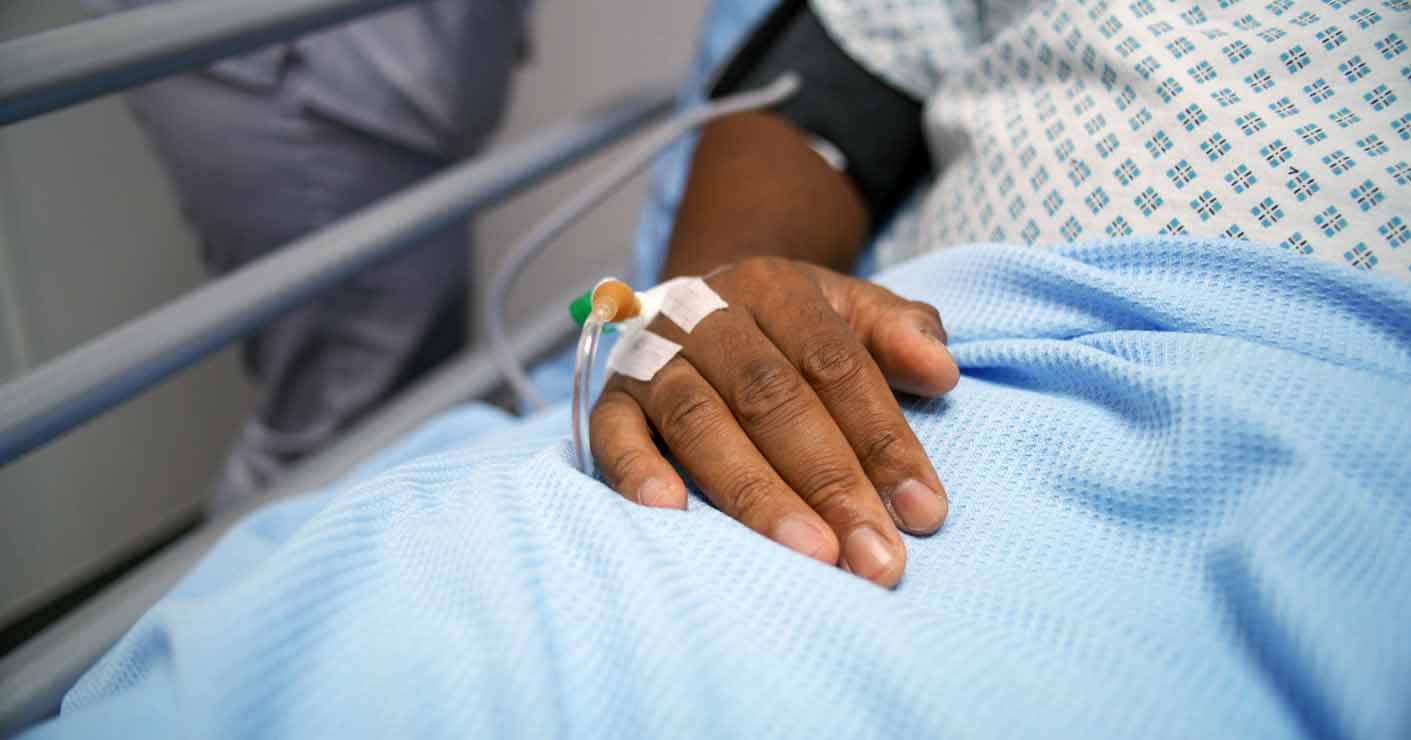Malnutrition is a state in which a deficiency of energy or nutrients such as protein, vitamins and minerals causes measurable adverse effects on body composition, function or clinical outcome. It is both a cause and a consequence of ill health. People who undergo major surgery are at increased risk of malnutrition, and nutrition support via oral, enteral or parenteral routes is recommended to be considered in surgical patients who are malnourished or at risk of malnutrition (NICE, 2006).
With protocols such as Enhanced Recovery After Surgery (ERAS®) and recommendations from the European Society for Parenteral and Enteral Nutrition (Weimann et al, 2006) and NICE (2006), the re-establishment of oral intake as early as possible after surgery is encouraged. However, where oral intake is contraindicated, artificial nutrition may be required.
Hyperglycaemia is particularly prevalent in postoperative patients owing to, as part of the stress response, insulin resistance and glucagon-mediated reductions in insulin secretion (Desborough, 2000). Furthermore, people with existing diabetes (type 1 or type 2) who are receiving parenteral nutrition and are acutely unwell will have a higher insulin demand. Therefore, in this article, we review the implications of artificial nutrition in people with diabetes and discuss the management of hyperglycaemia in this population.
Indications for artificial nutrition
Nutrition support via oral, enteral or parenteral routes should be considered in any surgical patient who is malnourished or at risk of malnutrition, as defined in Table 1 (NICE, 2006). The specific indications for the different routes of artificial nutrition are outlined below.
Enteral tube feeding
In accordance with NICE (2006), enteral tube feeding (routes labelled in red in Figure 1) should be considered in surgical patients with inadequate or unsafe oral intakes in whom the gastrointestinal tract is functional and accessible. Nasogastric tubes are used to deliver feed directly into the stomach; however, for patients in whom there is delayed gastric emptying or reflux is a concern, a nasojejunal tube may be placed for post-pyloric feeding.
Enteral feeds in postoperative patients are most commonly initiated using a continuous regimen, administering feed at a constant rate over 16–24 hours (NICE, 2006). The rate at which the enteral feed is administered will vary and can be limited by patient tolerance. Feeds are often started at a low rate and increased gradually over approximately 3–7 days to reach full nutritional requirements (Weimann et al, 2006).
Alternatively, a bolus regimen may be used, in which approximately 100–300 mL of feed is administered over a 10–30-minute period, several times a day (Todorovic and Micklewright, 2011). The volume of feed and time taken to administer boluses varies greatly and is often dependent on the patient’s tolerance and preference. Boluses can be given using a pump, syringe or gravity drip. Bolus regimens are less commonly used in people with nasojejunal tubes, as dumping syndrome may result (Todorovic and Micklewright, 2011). Some of the advantages and disadvantages of these two feeding regimens are set out in Table 2.
Normal digestive processes occur with enteral feeding, as liquid feed is broken down in the stomach and bowel, where it is absorbed into the blood, carrying nutrients to body tissues (Todorovic and Micklewright, 2011). Because of their liquid nature, enteral feeds have been found to produce a more rapid rise in blood glucose levels than a nutritionally equivalent solid meal in people with diabetes (Magaji and Johnston, 2011; Todorovic and Micklewright, 2011). This can be more of a concern when following a bolus regimen owing to faster delivery of feed and, therefore, carbohydrate. Therefore, the Parenteral and Enteral Nutrition Group of the British Dietetic Association advise that, when using a bolus regimen, the total volume of feed should be divided into at least four boluses where possible (Todorovic and Micklewright, 2011). This allows carbohydrate intake to be evenly distributed throughout the day in order to minimise fluctuation in blood glucose levels.
Parenteral nutrition
Parenteral nutrition (PN; routes labelled in blue in Figure 1) is indicated for use in people with a non-functional, inaccessible or perforated gastrointestinal tract, and in patients for whom enteral tube feeding is limited by tolerance, such as those with paralytic ileus, anastomotic leak, intestinal obstruction or short bowel syndrome (NICE, 2006; Braga et al, 2009). PN is generally administered as a continuous infusion over 24 hours; however, a gradual change to cyclical delivery (over 12–20 hours) is recommended in patients who have been receiving PN for more than 2 weeks (NICE, 2006). PN can be given in combination with enteral feeding in those who are unable to tolerate sufficient amounts of the latter to meet their nutritional needs.
PN bypasses the normal digestive processes of the stomach and bowel, as the nutrients are delivered directly into the bloodstream for transportation to body tissues. Regular monitoring of blood glucose levels is recommended in all patients receiving PN; however, hyperglycaemia is particularly common in people with pre-existing diabetes (NICE, 2006; Weiman et al, 2006; Todorovic and Micklewright, 2011). When discontinuing PN, reactive (or rebound) hypoglycaemia may occur, and any breaks in PN administration should be taken into consideration with insulin prescriptions. Hyperglycaemia is particularly prevalent in postoperative patients, because of the stress response (Desborough, 2000).
Diabetes and artificial nutrition
Patients with existing diabetes (type 1 or type 2) who are receiving PN and are acutely unwell will have a higher insulin demand. This is brought on by a raised metabolic rate in the peripheral tissue in response to the acute illness, coupled with a sustained supply of glucose from the PN (Cheung et al, 2005; Jakoby and Nannapaneni, 2012). Patients who are receiving continuous enteral feeding can also be difficult to manage on their usual insulin regimens because they are receiving a sustained supply of glucose, which differs greatly from the typical meal-time peaks (Oyibo et al, 2012).
A widely published complication associated with PN is hyperglycaemia. It is estimated that up to 50% of people receiving PN will become hyperglycaemic (Jakoby and Nannapaneni, 2012). This is partly due to, in addition to the steady supply of glucose, polyunsaturated fatty acids contained within the PN, which can cause a multitude of responses within the body, including insulin resistance (Pasquel et al, 2010). Hyperglycaemia whilst receiving PN has been shown to be an independent predictor of complications such as renal failure, infection, respiratory failure and death (Pleva et al, 2009; Marik, 2011). Cheung et al (2005) found that people with diabetes who were receiving PN were five times more likely to develop a central vein catheter infection than their counterparts without diabetes. Furthermore, they discovered that patients with a mean capillary blood glucose of >9.1 mmol/L were 11 times more likely to die, demonstrating the importance of glycaemic control in this group of patients.
Pleva et al (2009) advocate for a multidisciplinary approach to treating people with established diabetes who are commenced on PN, as this has been shown to reduce the risk of mortality by improving glycaemic control. However, there is no clear evidence available as to how this group of patients should be managed, and the available literature does not provide a clear direction as to what insulin regimens are most effective to avoid hyperglycaemia in these circumstances. In a retrospective study, Pasquel et al (2010) found a strong correlation between PN-induced hyperglycaemia and adverse clinical outcomes. They concluded that aggressive intervention to reduce and correct hyperglycaemia within the first 24 hours of PN initiation helped to reduce clinical complications.
The Joint British Diabetes Societies for Inpatient Care (JBDS-IP, 2012) have released guidelines on the management of patients receiving artificial nutrition following a stroke. Although the guidelines are tailored specifically for stroke, the JBDS-IP advise that they can be used as a framework for dealing with other patients receiving artificial nutrition. The guidelines argue that the use of intravenous insulin should be avoided where possible, and that patients should be managed using subcutaneous insulin regimens at the earliest opportunity to tackle hyperglycaemia.
Oyibo et al (2012) examined the effectiveness of a twice-daily insulin regimen in people with diabetes and stroke receiving artificial nutrition. At the start of the enteral tube feed, patients with insulin-dependent diabetes were commenced on a variable-rate intravenous insulin infusion (VRIII) until the feed rate was maximised. Thereafter, the patients were commenced on a twice-daily insulin regimen (mixed insulin), which did not take into account their weight but calculated the dose based on an estimation of their insulin:carbohydrate ratio. They found this to be ineffective at controlling capillary blood glucose (CBG) levels, and in some cases it required an aggressive dose titration. However, it is important to mention that none of the patients in the study had any documented episodes of hypoglycaemia, but equally, controlling their hyperglycaemia was not only problematic but also a lengthy process. They did conclude that using twice-daily insulin was more effective, in addition to being safe as it avoided hypoglycaemia. From the perspective of patient comfort and nursing staff workload, using a twice-daily insulin regimen during artificial nutrition was preferable to VRIII as it reduced the amount of testing required, which cut down on nursing staff workload and was less intrusive for the patients.
Case studies
Whilst Oyibo et al (2012) used a twice-daily, biphasic insulin regimen with doses based on estimations of the patient’s insulin:carbohydrate ratio, the local diabetes team at East Sussex Healthcare Trust uses the patient’s weight and percentage of actual total caloric provision, with consideration of renal function, in the calculation for the starting doses of the twice-daily biphasic insulin regimen.
Two case studies to highlight some strategies utilised in people receiving artificial nutrition are provided in Boxes 1 and 2. These cases demonstrate the calculations of doses of biphasic insulin according to individual nutritional requirements and the effectiveness of the chosen regimens. Although the strategies were effective in controlling capillary blood glucose levels without hypoglycaemia in these two patients, numerous factors can influence outcomes. All patients should be individually assessed to better identify the suitable insulin regimen.
Discussion
The management of glycaemia in people with diabetes receiving artificial nutrition is very challenging. Numerous factors need to be considered, including, but not limited to, the timing of the commencement of the feed; the timing of the insulin prescription and the discrepancy with the timing of actual administration; intentional and unintentional breaks in the feed; levels of hyperglycaemia; and other factors involved in hyperglycaemia (e.g. sepsis, the type of diabetes and the degree of gastrointestinal function). The use of biphasic insulin in these cases has been recommended, but incorporating caloric provision, rather than the amount of carbohydrate, in the dose calculation has been found to be more efficacious based on the authors’ experience. However, patient individuality means that this approach cannot be applied to all people receiving artificial nutrition. It is crucial that all patients are assessed individually and are prescribed a regimen that is suitable, with ongoing reassessment and review to ensure that optimal glycaemia is achieved during this period.




Developments that will impact your practice.
22 Dec 2025